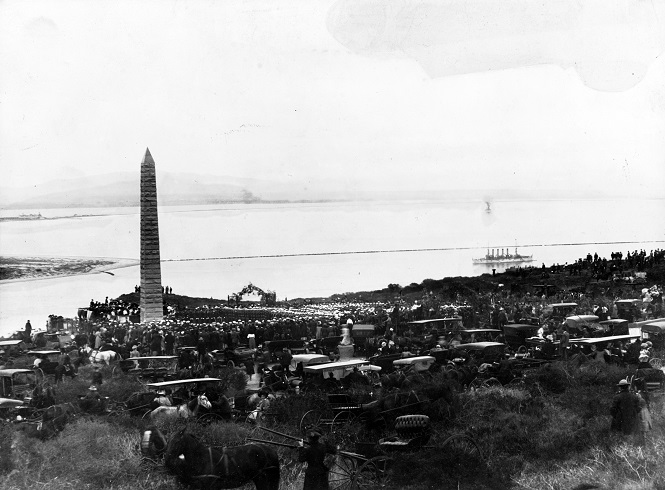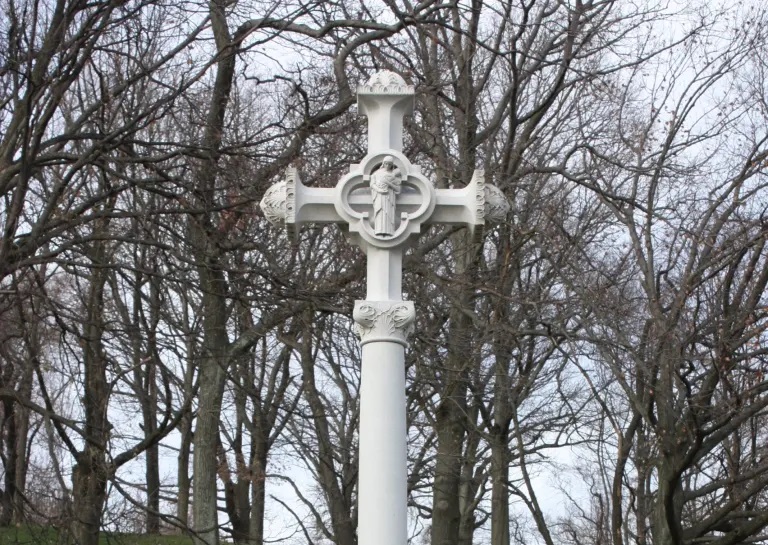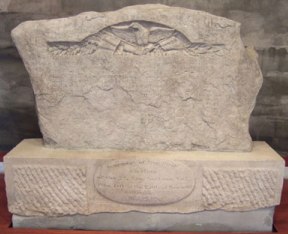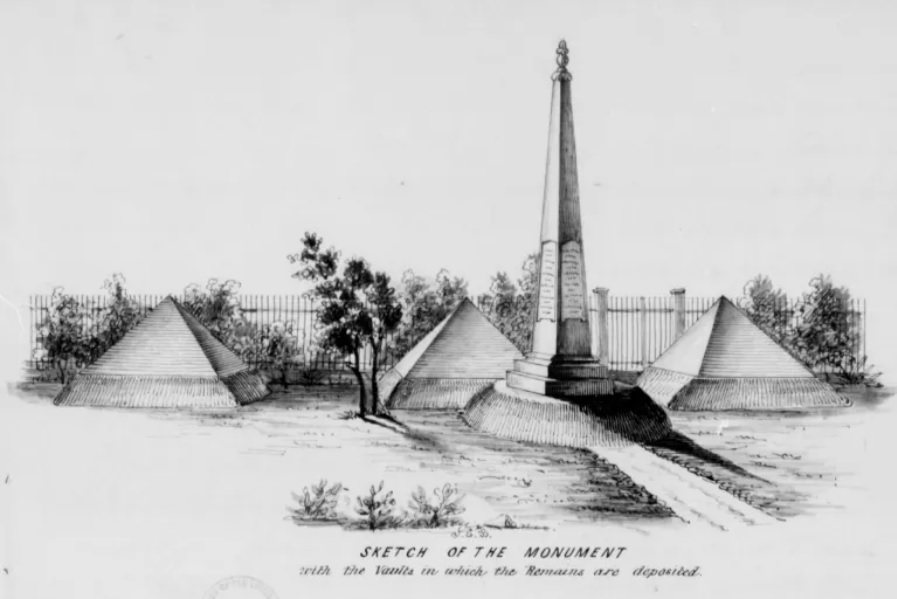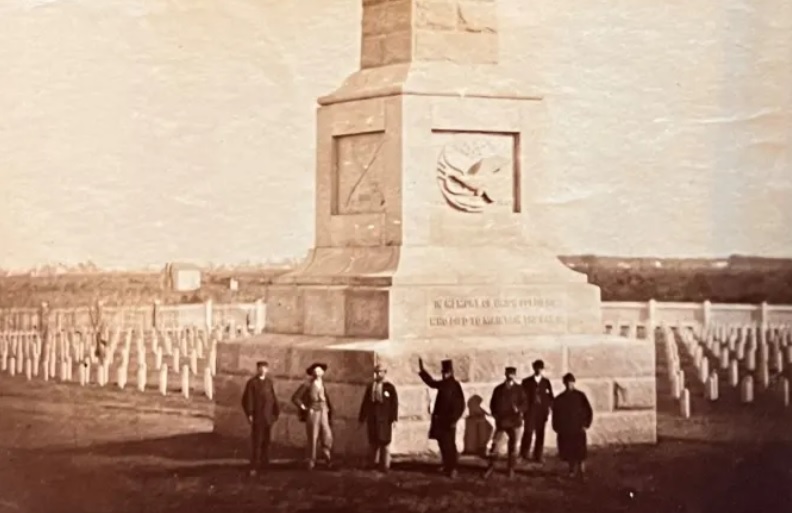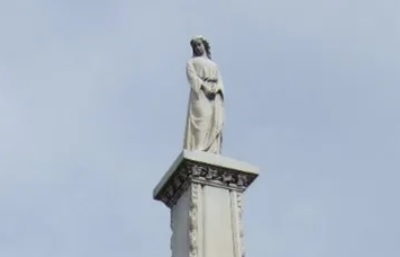History: Monuments
The number of monuments and objects that memorialize military service within NCA's national cemeteries, soldiers and government lots, and Confederate cemeteries has grown steadily since the first comprehensive inventory began in 2002. Approximately 1,400 memorial objects are currently documented. The oldest monuments predate the Civil War but every U.S. conflict has been recognized this way. Patriotic organizations formally donate an average of ten new monuments to NCA each year.
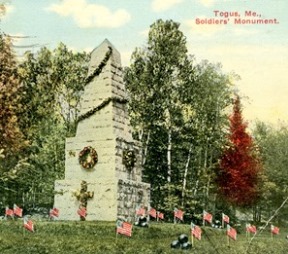
Fort Rosecrans National Cemetery
USS Bennington Monument and Grave Plot
The USS Bennington explosion was among the deadliest peacetime accidents in U.S. Navy history and claimed more lives than the Navy had lost in the nation's most recent conflict, the Spanish-American War. A granite monument was established to honor those lost in the Fort Rosecrans National Cemetery.
Cypress Hills National Cemetery
French Cross at Cypress Hills National Cemetery in Brooklyn
The 25 French sailors buried here are one of earlier instances of allied forces being buried in a national cemetery. It is also remarkable in that all of the sailors died from the same cause — they fell victim to the Spanish Flu which was sweeping the nation, and the world, in 1918–1919.
32nd Indiana Infantry Monument
The 32nd Indiana Infantry Monument, carved January 1862 by Private August Bloedner, was moved to Cave Hill National Cemetery in Louisville, KY, in 1867. It is the country's oldest surviving Civil War memorial. However, its condition was deteriorating. Over several years, NCA conserved this monument, now displayed at the Frazier History Museum, and produced a successor that was dedicated at the cemetery in December 2011.
St. Augustine National Cemetery
On the south side of St. Augustine National Cemetery in Florida, there are three squat pyramids and a single taller obelisk. The Dade Pyramids and Monument, as they are known, mark the resting place of the U.S. soldiers who died in the opening engagement of the Second Seminole War (1835–1842).
Dorothea Dix's Monument to Union Soldiers
On May 12, 1868, Dorothea L. Dix transferred ownership of the newly installed monument at Hampton National Cemetery in Virginia to the U.S. Army. Dedicated to "Union Soldiers who perished in the War of the Rebellion," the 65-foot-tall granite obelisk is among the largest and earliest Civil War memorials in VA's national cemetery system.
Congressional Cemetery Government Lots
The Washington Arsenal Monument
Irish-American sculptor Lot Flannery was commissioned to design and carve a memorial to place at the gravesite of fifteen women buried in one of the Congressional Cemetery's government lots. The monument honors the twenty-one women who died in an explosion at the Washington Arsenal during the Civil War.
* External Link Disclaimer: This page contains links that will open in a new tab and take you outside of the Department of Veterans Affairs website. VA does not endorse and is not responsible for the content of the linked websites.











